There is nothing better than the summertime for delicious, mouth-watering mangoes. It’s been a delightful and most loved fruit in India. Our country is known for the many exotic mango hotspots with a delicious aroma and flavor.
People who love mangoes are always eager to discover and taste the amazing varieties of the most coveted fruit. There are various types of mangoes in India.
List of popular types of mangoes in India.
1. Alphonso (Hapoos) from Ratnagiri
History – The variety’s name is derived from Afonso de Albuquerque, A Viceroy general and an outstanding Military figure.
The person credited with the founding of colonies is credited with establishing colonies. Portuguese to Goa and Bombay-Bassein.
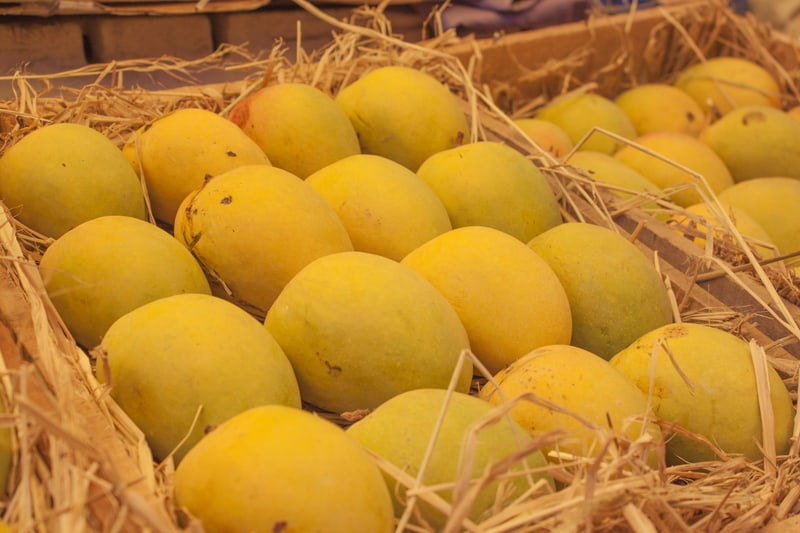
The Portuguese introduced Grafting Mango trees are used to make varieties such as Alphonso. Alphonso is also among the most expensive mango varieties and is cultivated mainly in the Konkan region of western India.
Ratnagiri and its surrounding regions are extremely popular, not only in India.
Ratnagiri, Along with its surrounding regions, is among the most prestigious and sought-after hotspots for those who love mangoes, known for its Alphonso Mangoes. Ratnagiri is approximately 350 km from Mumbai and accessible by roads and train networks.
The best time to buy Alphonso mangoes is in May. It is well-known for its golden yellow color and delicious taste and smell.
Alphonso, also known as Hapoos, is the most expensive mango in India. It is sold in Dozen (12 nos.) or in a box that contains 5 to 6 Dozens of Hapoos mangoes. One Dozen of Alphonso Mango can cost Rs. 600 to Rs. 1500 per dozen.
2. Kesar Mangoes from Gujarat
History – The mango was cultivated in 1931 by Junagadh Sale Bhai in Vanthali. The grafts comprised 75 numbers were planted in the hills in Girnar on the Junagadh Laal Dori farm.
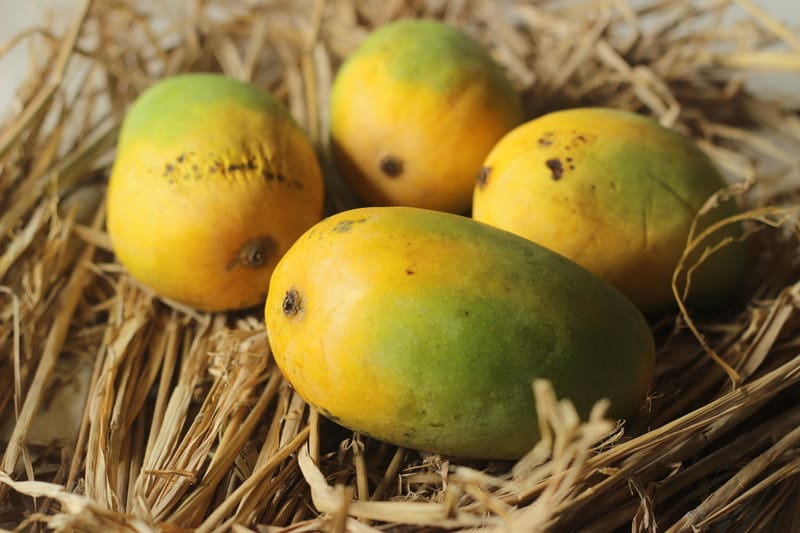
The mango is believed to be known as “Kesar” in 1934 when it was first planted. Nawab of Junagadh Muhammad Mahabat Khan III “He said, “This was Kesar,” as he gazed at the pulpy orange of the fruit. Kesar is Gujarati / Hindi for Saffron.
Girnar hills in Junagadh are renowned as the land of lions, and then there are the delicious Kesar mangoes of Talala. This kind of mango is known by the name “the “queen of mangoes” within INDIA.
Junagadh is a farm located around 350 km away from Ahmedabad. The name of the Kesar mangoes is to the saffron (Kesari) look and excellent flavor. They are available from May through July, popular for exotic Gujrati and other meals.
3. Dashehari Mangoes from Lucknow
History – In the 1800s, Dasheri was first discovered within the garden of the Nawab of Lucknow. Since then, Dasheri cultivars have been grown and planted all over India. Villagers from Dasheri, close to Kakori, Uttar Pradesh, Have the mother plant.
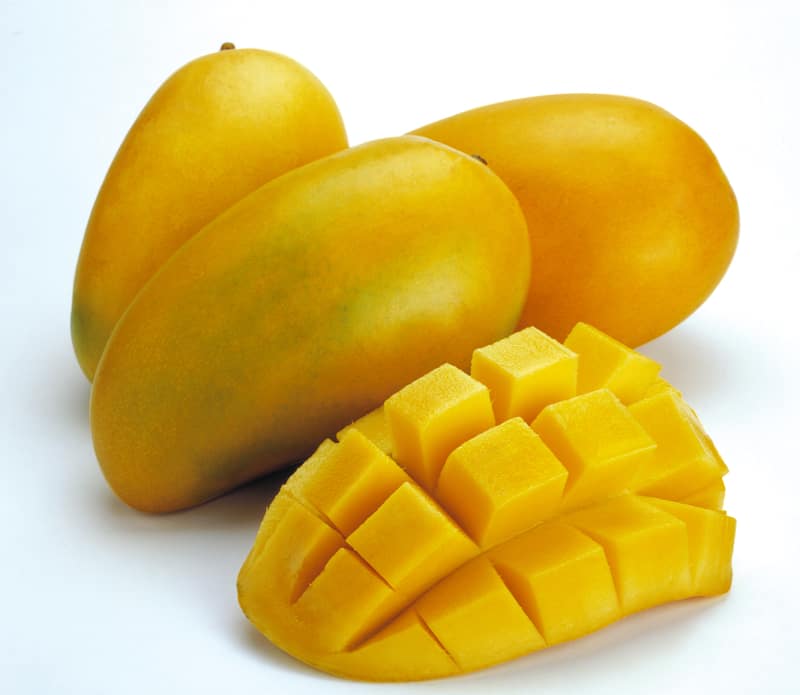
This mother plant was part of Orchards owned by Mohammad Ansar Zaidi. The mother plant is believed to be about 200 years old. It produces fruit regularly throughout the year.
While the fruit is small compared to the grafted varieties, its flavor, and aroma are unsurpassed. The plant is cared for by the descendants of Zaidi. It is commonly called “The Mother Dasehri.”
Lucknow, the region of Nawabs, is equally well-known for its royal and Nawabi Dashehari mangos. North Indian Lucknow and the surrounding towns, is a famous region for its mangoes.
The largest producer of this fruit is Mahilabad, about 30 km from Lucknow. They are typically in season from mid-May through late August. They are famous because of their green leaves and tasty taste.
4. Chausa Mangoes from Uttar Pradesh
Also often referred to as chausa, also known as Chaunsa, it is a mango cultivar indigenous to South Asia. It is cultivated mainly in Pakistan and India.
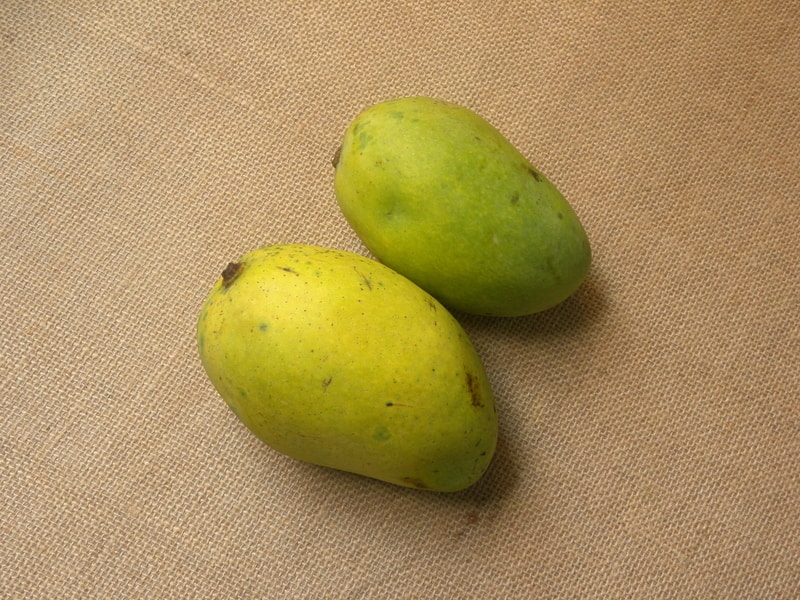
This is a variety of mango found within Uttar Pradesh in India, normally in the areas of Harodi. It is said that mangoes are healthy, but in comparison, Chaunsa is extremely popular due to its nutritional value and delicious pulp, suitable for all-year-round cooking at home. Chaunsa is usually available in June and is open until August in August.
5. Badami Mangoes from Karnataka
Badami mangoes are also referred to by the name “The Alphonso of Karnataka.”
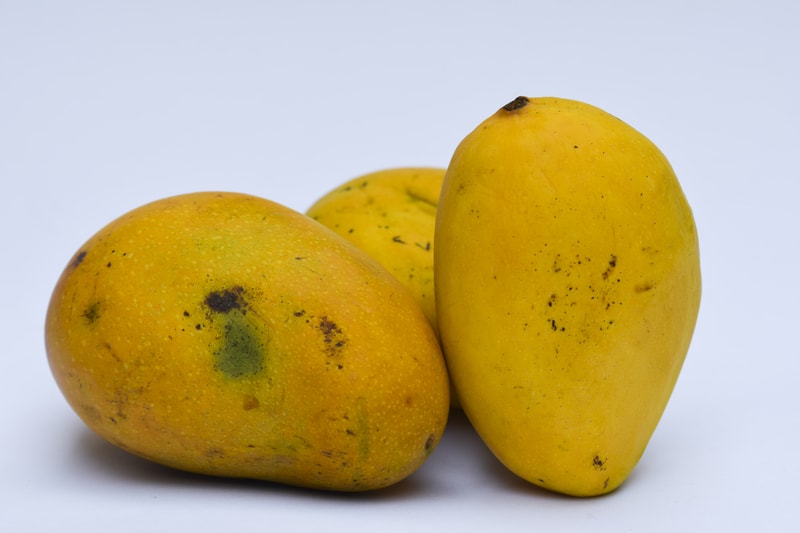
Badami mangoes are very well-known mangoes in Karnataka. It is known as Hapus from Karnataka. It is delicious and delicious. Badami mangoes are the sweetest.
They have a very sugary flavor and taste like the hapus mangoes. The time of harvest is typically from May to July.
6. Langra mangoes from Varanasi
The ‘Langra’ Mango, sometimes referred to as Banarasi Langra, is a mango cultivar mostly grown in Varanasi and Banaras in Northern India. In certain parts of northern India and also in Bihar, the ‘Langra’ fruit is also referred to as the ‘Malda’ Mango, referring to the town of Malda in West Bengal.
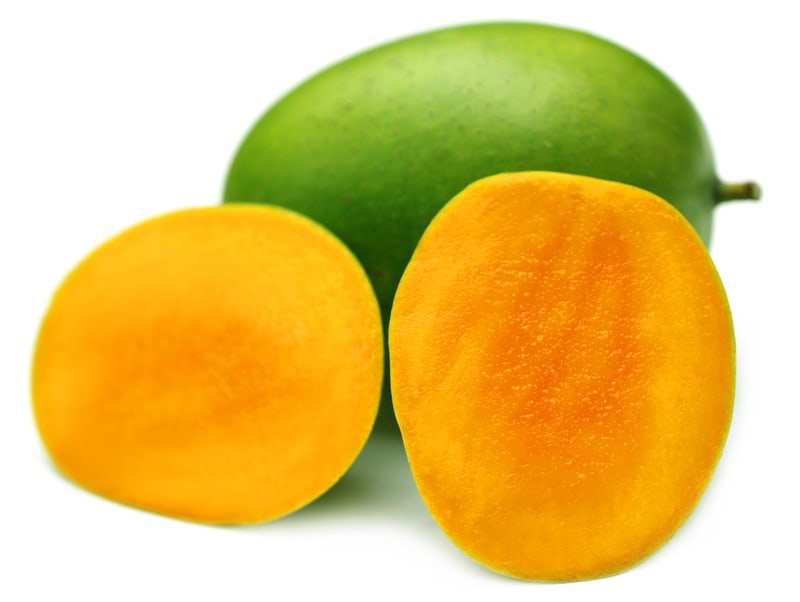
It is typically harvested in the latter portion of July. It is mainly used for canning and slicing.
They are scented with exotic scents sold in major metro markets, particularly Varanasi. Produced by farmers from the area, they are shipped relatively well to other locations within the state.
If you observe their skin color, the langra mangoes are yellowish and extremely pale; it is a new look and character.
7. Totapuri Mangoes from Bangalore
The ‘Totapuri’ fruit, also known as Ginimoothi is a plant extensively cultivated in southern India and cultivated in Sri Lanka. It’s also known under various names such as Bangalore, Collector, Kallamai, Kili Mooku, Gilli, Mukku, Sandersha, Ginimoothi Maavina Kayi. However, it is most popularly known as Totapuri.
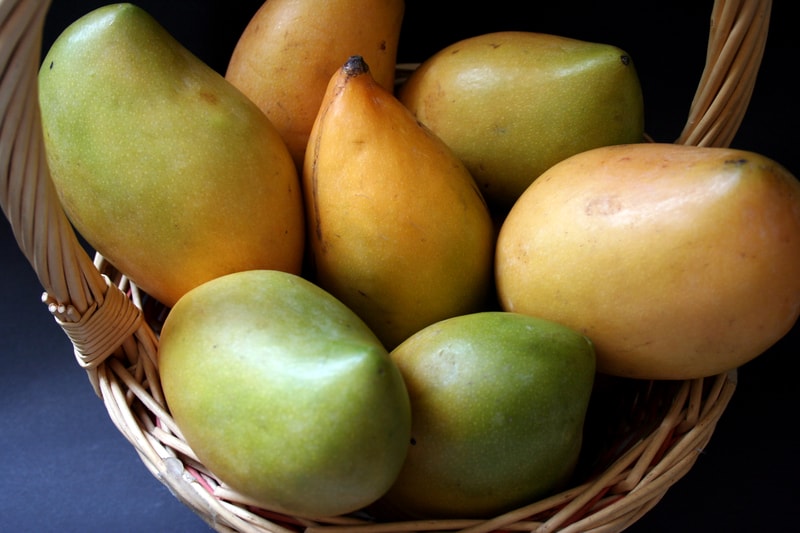
It translates to parrot face. Totapuri Mango Skin does not have the characteristic bitter flavor of Most Mango skins or has a highly slight bitter taste and is consumed along with the flesh in traditionally.
They’re a hell of a mango, with thin thread but a tasty flavor. The mangoes are sweet and even used as pickles when fresh. Its shape is round, and is widely consumed in the state.
The pulp isn’t much different from other varieties since it’s not too juicy but has the perfect texture and flavor. It is available from the season from May to July.
8. Bagnapalli from Andhra Pradesh
Banaganapalli is one of the towns situated in Andhra Pradesh, India. It is located in the Nandyal district, located 38 kilometers from the east of Nandyal. Banaganapalli is known due to the variety of mangoes and the cultivation of Banaganapalli, named after the city’s name.

This is nothing less than the royal Bangnapalli mangoes from the Andhra Pradesh region, widely sold across India in distant locations. Due to its taste and sweetness, you may have seen advertisements for juices and pulp made from this mango variety.
Very pale skin on the top, but delicious inside. It is pretty significant when compared with other mango varieties. It also received its GI tag in the last few days. It is also very rich in flavor and pleasant having this drink.
9. Neelam Mango from Hyderabad
Neelam mangoes are grown in various regions of India, typically in abundance during June. The mangoes are popular in Hyderabad and are one of the most well-known varieties of mango that hail from the South of India and Raspuri Mango.
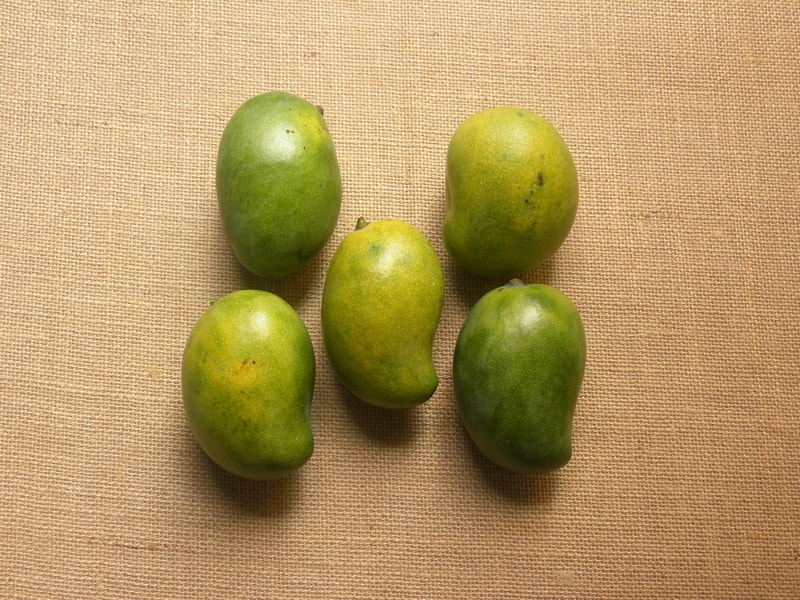
Neelam mangoes have the perfect shape with a large, oblong, and pointed base. Skin is golden-yellow and has the scent of flowers and a sweet acidic taste. It is a late-season variation.
10. Himsagar mangoes from West Bengal
One of the most well-known Nawabi cities in West Bengal, the city of Murshidabad is famous for its assortment of fresh and delicious mangoes.
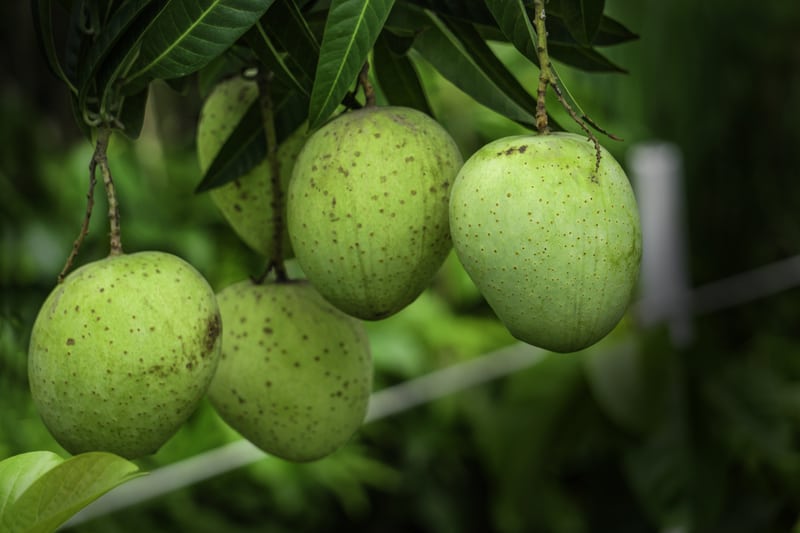
Located 230 kilometers from Kolkata, the city is an excellent connection via roads and railways. Of the most well-known mango varieties, Nawab and Begum-liked Kishan Bhog are Bengal’s preferred mangoes. The time when the Himsagar mangoes can be discovered is between May and early June.
11. Safeda Mangoes from Andhra Pradesh
Safeda is renowned for its sweet and sour flavor and is best used in Milkshakes. It is determined by its bright yellowish color and whitish pulp.
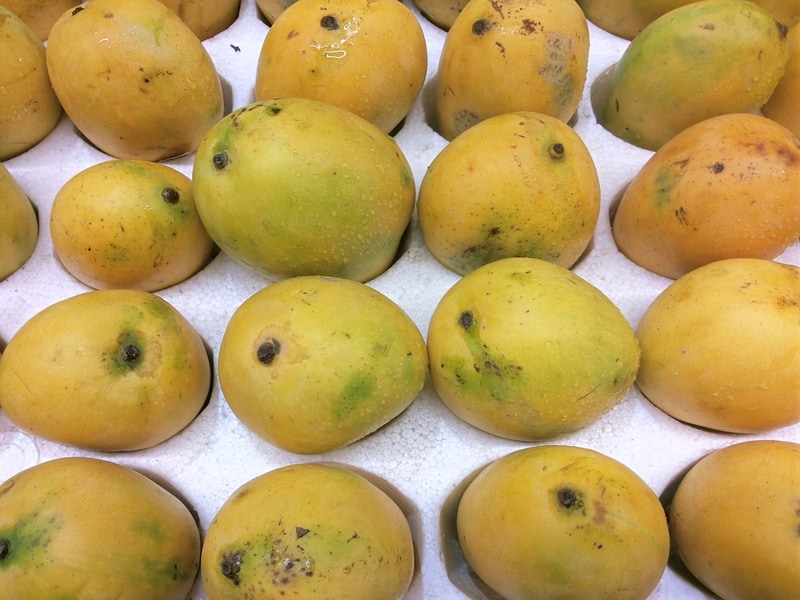
Andhra Pradesh is one of the most popular mango belts as well. Banganpali, or Safeda, also the widest mango variety, originates from Andhra.
It is generally available from March through July because of the ideal climate conditions. The state is the top supplier of high-quality mangoes in other Indian metropolitan cities.
12. Mulgoba from Tamil Nadu
Malgova or Malgoa is a significant mango cultivar primarily grown throughout Tamilnadu and Karnataka, and other regions in South India. It is a huge circular fruit (typically 300-500 grams) containing a tiny hard seed and is sweet and sour.
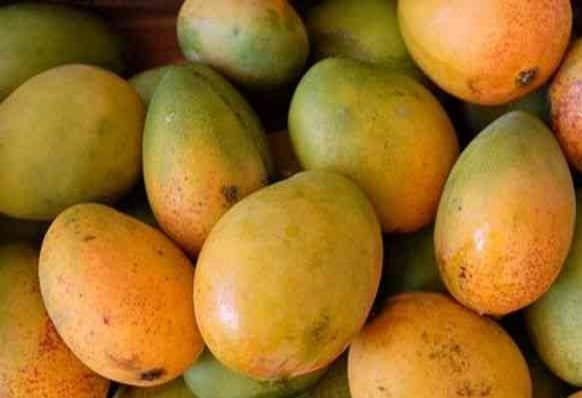
It is widely believed to be among the finest mangoes. The production area is concentrated in Salem, Dharmapuri, and Krishnagiri districts in Tamil Nadu, Gujarat, and the adjoining parts in Andhra Pradesh and Karnataka.
Malgova can be described as a round-shaped mango that retains the green color (with some red) when it’s ripe. It’s roundish-oblique in size with a blunt tip and a narrower beak laterally compared to other mangoes varieties. In terms of size, the stone is tiny. The size of the fruit is small. The flesh with no fibers is soft and yellow, and the flavor is spicy, rich with sweetness. It is a single seed. It is a mature mango that is typically harvested in May.
Mango Season in India
| States of India | Mango Season |
| Gujarat | May – June |
| Maharashtra | April – May in Ratnagiri May- June in other regions |
| Tamilnadu | April – May |
| Andhra Pradesh | May – July in Coastal districts May in Rayalaseema |
| Karnataka | May -July |
| Uttar Pradesh | June- August |
| Bihar and Northern states of India | June – August |
Leave a Reply